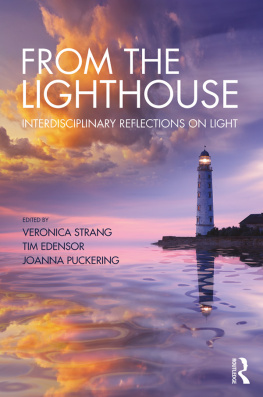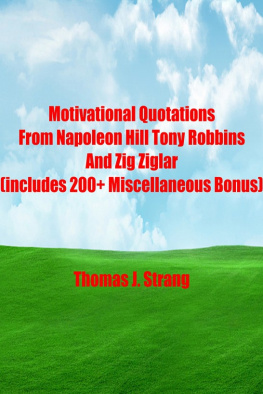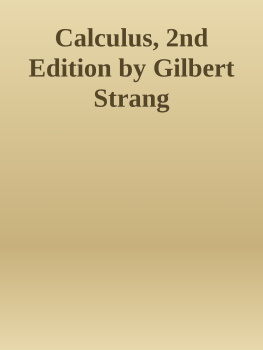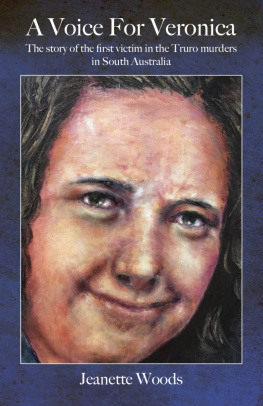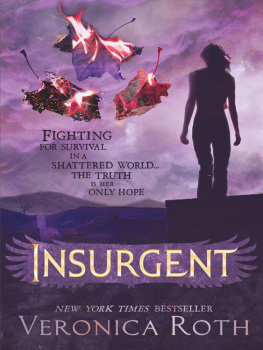First published 1997 by Berg Publishers
Published 2020 by Routledge
2 Park Square, Milton Park, Abingdon, Oxon OX14 4RN
605 Third Avenue, New York, NY 10017
Routledge is an imprint of the Taylor & Francis Group, an informa business
Veronica Strang 1997
All rights reserved. No part of this book may be reprinted or reproduced or utilised in any form or by any electronic, mechanical, or other means, now known or hereafter invented, including photocopying and recording, or in any information storage or retrieval system, without permission in writing from the publishers.
Notice:
Product or corporate names may be trademarks or registered trademarks, and are used only for identification and explanation without intent to infringe.
Library of Congress Cataloging-in-Publication Data
A catalogue record for this book is available from the Library of Congress.
British Library Cataloguing-in-Publication Data
A catalogue record for this book is available from the British Library.
Typeset by JS Typesetting, Wellingborough, Northants.
ISBN 13: 978-1-8597-3946-4 (hbk)
ISBN 13: 978-1-8597-3951-8 (pbk)
This book would not have been possible without the financial support of the ESRC, whose funding of a larger project allowed me, as Howard Morphy's research assistant, to continue my doctoral work and to spend a considerable amount of time in the field. During my studies I also received generous financial assistance from Linacre College and from Oxford University itself. I am immensely grateful for all of this support.
On a more personal level, my first and most heartfelt thanks must go to Howard Morphy, who supervised my research. His insight and experience have been invaluable, and his enthusiasm inspirational. Throughout this project he has been unstinting in his support, kind in his criticisms and generous in his encouragement: he went to great lengths to help me find the funding for my doctorate; he 'dropped in' to make sure that all was well during my fieldwork in North Queensland, and he has always found time in his impossible schedule to read the emerging drafts of this text and to offer advice.
Many other people have contributed to the various stages of this project. Linacre College provided a home, and continues to offer a community of friends. Julia Cousins at the Pitt Rivers Museum, with enormous patience, kept the project solvent and tolerated my accounting methods. I would also like to thank Frances Morphy for years of generous hospitality and innumerable glasses of wine.
In Australia, John Trude in Sydney found me wheels to go north with, lent me his camping gear and provided solid friendship, support and encouragement. He and his family make Australia a home from home.
In North Queensland, the Aboriginal people of Kowanyama welcomed me warmly and offered me a place to live. Without the support of the Community Council and the Counsel of Elders, this project would not have been feasible. Many people in Kowanyama have contributed generously to this research, and I would like to thank them all, most especially my adoptive Kunjen family: Stu Patterson who first took me under his wing at Rutland in 1988; Aunties Alma Wason and Judy Brumby for their many explanations and immense kindness; and the old men, Lefty and Paddy Yam, Nelson Brumby and Colin Lawrence, who spent so much time 'learning me' their country. I am also grateful to Viv Sinnamon, Gary Clarke and the Rangers for their help and advice.
The pastoralists on many of the Gulf country cattle stations have also been eminently hospitable, inviting me to 'sling my swag' in their homes, and putting up with my questions, my video camera and occasionally my cooking. I would particularly like to thank David Hughes of Koolatah, who took a lively interest in my work, gave me valuable material on his family history, lent me his good horses and smoothed my path to many other stations. I would also like to thank Anwen McPherson at Koolatah, the Finches at Sefton, Diane Denial from Highbury, Colin Hughes and Beth Shephard at Drumduff, the Hamiltons at Dunbar, and all the other station managers and employees who let me visit and tag along, gave interviews and filled in questionnaires. I hope that they will discern the affection in the picture I have drawn of their culture.
There are other people in North Queensland who have been equally kind Arthur and Mary Pratt and Ric and Adriaan Smit in the Nassau River fishing camp; Bruce McCarthy and his colleagues at the Red Dome gold mine; and Joy and John Meaney in Cairns.
Sadly, it is too late to thank Lauriston Sharp, but I would like to acknowledge his important contribution to this book. His early ethnography of the Yir Yoront was immensely useful, and when I visited him at Cornell he kindly copied many unpublished chapters of his work for me, and offered much helpful advice.
The final stages of this project owe a great deal to Martin Price. I would like to thank him for his cheerful and wholehearted backing, for the meals-on-wheels, and especially, for the many hours of painstaking editorial liposuction that he has contributed to the following text. Most of the commas, are his.
Last, but not least, I would like to thank my parents for their unwavering support and encouragement.

Alma Wason and Roy Luke at one of the Kunjen people's traditional camp sites at the Alice-Mitchell River junction.

David Hughes and Buckle at the Koolatah homestead.
Field notes, 4 July 1992. Emu Lagoon:
The elders decide to camp at Emu for the night. It is a big lagoon, one of the few permanent water sources in this part of Kunjen country. We pick a site near the water's edge, but not too close, because of the crocodile that they know is in there. The old men throw their fishing lines in as soon as we have unloaded the swags from the ute, and by the time the sun has gone down they have caught enough fish for supper. Around the camp fire they talk about this country: how they used to come here, even when they lived on the stations. The curlews wail in the dark, and the flying foxes twitter, fighting in the fruit trees. There are splashes from the moonlit water: either the pelicans are fishing, or the crocodile is on the move.
In the morning we walk right around the lagoon. Lefty and Paddy tell me the language name of each tree, and what it is used for - food, medicine, string, dye, soap, bark for humpies, leaves for poisoning fish. As we walk they collect some bark 'for cough', nuts, fruit and 'cassava' roots. They show me which fruits the possums and emus eat, the giant ant beds - ifan errgng - that have water underneath, and the stream where 'the old people' used to make fish traps. We go past the burial places and up to the ceremony ground on the ridge. In the 'early days', at the end of Floodwater Time, people from neighbouring clans gathered here each year for corroborees - nyjamul - marriages, celebrations, initiations and other rituals. Naked, with a tomahawk tied on a string around their neck, or with just a small bark apron, they painted the country on their bodies and danced their Dreamings to keep the ancestral forces alive.






